Ichtyofauna
Hydroelectric undertaking deployment requires water impoundment and pond formation, which are commonly called reservoirs. As a consequence, part of the natural course of the riverbed is altered, which causes changes in the dynamics of water flow (lotic to lentic environment). These changes can affect the aquatic community, modifying its composition and favoring some species over others.
Furthermore, throughout the operation of these projects, some specific situations may put fish fauna at risk, causing, for example, their imprisonment in certain locations due to fluctuations in the water level in the reservoir or confinement in machines during maintenance procedures. plants.
To minimize all possible impacts on ichthyofauna, Copel develops several programs that include fish rescue during the dam construction phase and during the operation of hydroelectric plants, periodic monitoring of ichthyofauna in its reservoirs and actions aimed at research, reproduction and release of fish.
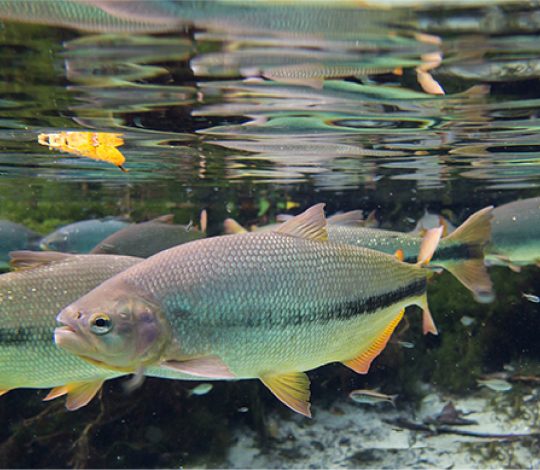
Ichtyofauna Rescue and Monitoring
Committed to the conservation of biodiversity, Copel carries out several activities aimed at monitoring and rescuing fish, aiming to avoid, minimize and compensate for the impact on the ichthyofauna (fish fauna) existing in the reservoirs and rivers under its responsibility.
The first monitoring actions were started in 1993 and, since then, the Company’s activities have allowed the survey of different species and it has consolidated itself as an important tool in mapping the richness of ichthyofauna species in the monitored areas, including the identification of threatened species. of extinction.
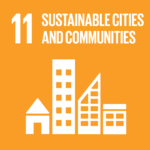
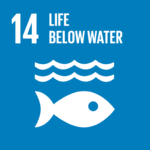
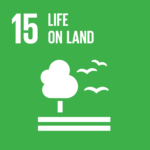
Copel’s ichthyofauna monitoring activities identified some threatened species that occur in the areas of influence of the Company’s projects. In all, adding the threatened species recorded in all the projects monitored, seven species were recorded in the category Endangered (EN), four of them for UHE Colíder and three for the plants in Paraná (see table).
According to the Ministry of the Environment’s (MMA) national list, of these seven species, two are in the Critically Endangered (CR) category, two are Endangered (EN) and three are in the Vulnerable (VU) category. As for the IUCN international list, only one of these species is classified as Critically Endangered (CR), two as Endangered (EN) and two as Vulnerable (VU).
List of species threatened with extinction by river basin where Copel operates and by monitored enterprise:
River basins | Enterprises | Species | Threat Category | |
MMA 2022 | IUCN 2025 | |||
South Atlantic | UHE Chaminé | Cyprinus carpio | NE | VU |
Hypophthalmichthys molitrix | NE | NT | ||
Pseudoplatystoma corruscans | VU | NT | ||
UHE GPS | Cyprinus carpio | NE | VU | |
Pseudoplatystoma corruscans | VU | NT | ||
Iguaçu | UHE GBM | Cyprinus carpio | NE | VU |
Hypophthalmichthys molitrix | NE | NT | ||
UHE GJR | Steindachneridion melanodermatum | EN | EN | |
Cyprinus carpio | NE | VU | ||
PCH Bela Vista | Brycon orbignyanus | CR | EN | |
Steindachneridion melanodermatum | EN | EN | ||
Trichomycterus papilliferus | EN | EN | ||
Cyprinus carpio | NE | VU | ||
Psalidodon troya | NE | VU | ||
Hypophthalmichthys molitrix | NE | NT | ||
UHE GNB | Steindachneridion melanodermatum | EN | EN | |
Cyprinus carpio | NE | VU | ||
PCH Cavernoso II | Steindachneridion melanodermatum | EN | EN | |
Cyprinus carpio | NE | VU | ||
PCH Cavernoso I | Steindachneridion melanodermatum | EN | EN | |
PCH Chopim | Steindachneridion melanodermatum | EN | EN | |
Cyprinus carpio | NE | VU | ||
UHE DRJ | Steindachneridion melanodermatum | EN | EN | |
Cyprinus carpio | NE | VU | ||
UHE Salto do Vau | Cyprinus carpio | NE | VU | |
Piquiri | PCH Melissa | Pseudoplatystoma corruscans | VU | NT |
Tibagi | UHE Apucaraninha | Cyprinus carpio | NE | VU |
Pseudoplatystoma corruscans | VU | NT | ||
PCH Pitangui | Cyprinus carpio | NE | VU | |
PCH São Jorge | Cyprinus carpio | NE | VU | |
NE – Not Evaluated; VU – Vulnerable; NT – Near Threatened; EN – Endangered | ||||
The identification of endangered species is an important tool for biodiversity conservation and allows efforts to be directed towards more specific and targeted actions, such as those carried out at the Experimental Station for Ichthyological Studies at Copel GeT, through reproduction and repopulation actions.
Note: No species are listed in CITES.
Fish species survey in the reservoirs where Copel works is performed by means of Ichtyofauna Monitoring Program. The monitoring actions are performed in 18 reservoirs, currently widespread in four river basins in Paraná State and one in Mato Grosso State.


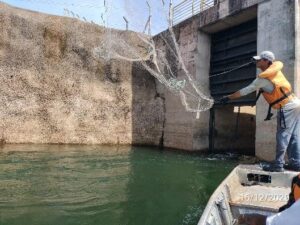

Copel GeT teams carry out fish rescues during the implementation and operation of its hydroelectric plants. Certain activities of these enterprises can cause fish to be trapped in inappropriate places, putting them at risk.
To avoid impacts on fish communities, Copel technicians and biologists monitor these maintenance activities, rescuing fish that may become trapped and releasing them in a safe area, within their environmental limits.
Each rescue event is a risk activity, involving specialized technicians and equipment. The good practices for rescuing fish fauna at Copel are reflected in the excellent success rate of the actions: on average, more than 98% of fish are rescued alive and returned to the wild.

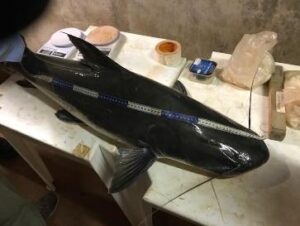
Species wealth refers to the number of species that occur within a specific geographic space. In case of Copel, these
are the species that occur within its undertaking influence area under its concession, specifically in hydroelectric
power stations and in one thermal power station.
Nowadays, 235 species are registered within the river basin Company operation areas in Paraná State and 323 species in
Colíder Hydroelectric Power Plant influence area in Mato Grosso State.
Fish species wealth by river basin, where Copel works, and by monitored undertaking. between 2002 and 2025.
| Bacias Hidrográficas | Período de monitoramento | Empreendimentos | Nº de espécies |
| South Atlantic | 2002 – 2024 | CHE Small Hydro Power Plant | 53 |
GNA Small Hydro Power Plant | 46 | ||
GPS Hydroelectric Power Plant | 64 | ||
| Iguaçu | 2002 – 2024 | CAV/CAS Small Hydro Power Plant | 37 |
CIM Small Hydro Power Plant | 49 | ||
DRJ Small Hydro Power Plant | 44 | ||
GBM Hydroelectric Power Station | 74 | ||
GJR Hydroelectric Power Station | 83 | ||
GNB Hydroelectric Power Plant | 105 | ||
SVU Small Hydro Power Plant | 33 | ||
| Tibagi | 2002 – 2024 | APC Small Hydro Power Plant | 52 |
GJC Hydroelectric Power Station | 83 | ||
PGI Small Hydro Power Plant | 40 | ||
SJR Small Hydro Power Plant | 60 | ||
FRA Hydroelectric Power Station | 76 | ||
| B. Piquiri | 2002 – 2024 | MEL Small Hydro Power Plant | 55 |
| Teles Pires | 2011 – 2024 | CLR Hydroelectric Power Station | 323 |
Some species instances registered in the monitoring are provided below.
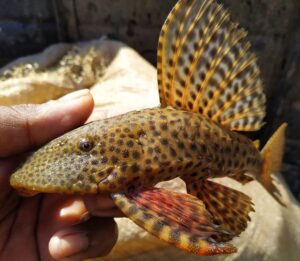
Hypostomus
sp. (Iguaçu Basin).
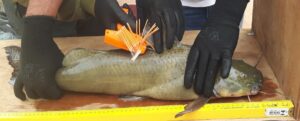
zungaro (Teles pires Basin).
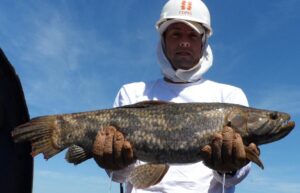
Hoplias aimara (Teles Pires Basin).
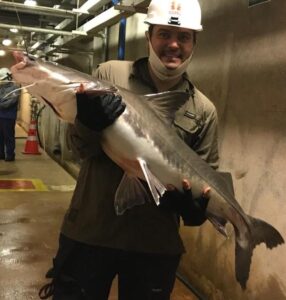
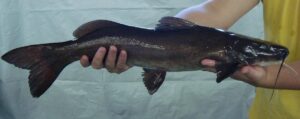
Fish Reproduction and Repopulation
Foreseen as environment offset actions in benefit of the biodiversity, fish reproduction and repopulation activities started within the environment licensing scope of Governador Ney Aminthas de Barros Braga Hydroelectric Power Station, known at the time as Segredo Power Station.
Repopulation actions developed by Copel have environment mitigation and offset feature, as the fish raised in Fish Study Experimental Station (EEEI) do not have commercial interest, the aim is native species conservation.



